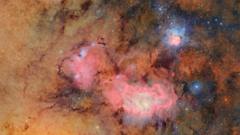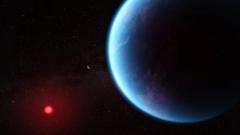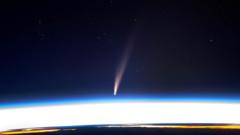In April, astronomers sparked excitement by reporting a possible detection of life on K2-18b, an exoplanet located over 120 light-years away. This revelation captured the attention of scientists and the public alike, but further investigation quickly followed.
Within the last month, three separate research teams evaluated the original data indicating the presence of potential biological molecules in K2-18b's atmosphere. The consensus from these assessments is clear: the purported evidence for alien life does not hold up under scrutiny. "The claim just absolutely vanishes," stated Luis Welbanks, a researcher from Arizona State University involved in one of the studies.
The controversy surrounding K2-18b highlights the ongoing struggles astronomers face when it comes to observing distant planets. While we can easily observe nearby planets like Jupiter, the extreme distance of planets like K2-18b makes them virtually invisible using traditional telescopes.
To combat this limitation, astronomers have developed sophisticated techniques to extract information about these far-off worlds. For instance, they measure the gravitational effects of planets orbiting stars or the slight wobbles of those stars. A breakthrough occurred in 2010 when researchers observed GJ 1214b, situated 48 light-years away, revealing clues about its atmospheric composition as it passed in front of its star.
In 2022, astronomers began leveraging the capabilities of the James Webb Space Telescope, opening new avenues for studying distant exoplanets. This powerful tool has enabled scientists to detect faint signatures in starlight, offering insights into the chemical make-up and conditions of exoplanet atmospheres.
While the dream of discovering life beyond Earth remains alive, the latest findings emphasize the caution needed in interpreting data from such vast distances.
Within the last month, three separate research teams evaluated the original data indicating the presence of potential biological molecules in K2-18b's atmosphere. The consensus from these assessments is clear: the purported evidence for alien life does not hold up under scrutiny. "The claim just absolutely vanishes," stated Luis Welbanks, a researcher from Arizona State University involved in one of the studies.
The controversy surrounding K2-18b highlights the ongoing struggles astronomers face when it comes to observing distant planets. While we can easily observe nearby planets like Jupiter, the extreme distance of planets like K2-18b makes them virtually invisible using traditional telescopes.
To combat this limitation, astronomers have developed sophisticated techniques to extract information about these far-off worlds. For instance, they measure the gravitational effects of planets orbiting stars or the slight wobbles of those stars. A breakthrough occurred in 2010 when researchers observed GJ 1214b, situated 48 light-years away, revealing clues about its atmospheric composition as it passed in front of its star.
In 2022, astronomers began leveraging the capabilities of the James Webb Space Telescope, opening new avenues for studying distant exoplanets. This powerful tool has enabled scientists to detect faint signatures in starlight, offering insights into the chemical make-up and conditions of exoplanet atmospheres.
While the dream of discovering life beyond Earth remains alive, the latest findings emphasize the caution needed in interpreting data from such vast distances.























